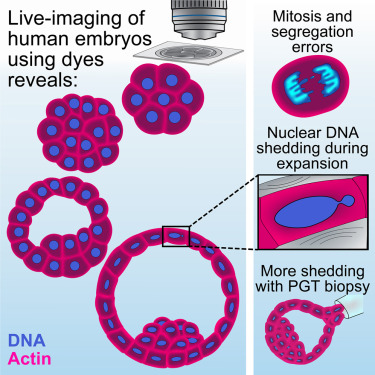A team of researchers including Nicolas Plachta, PhD, from the Perelman School of Medicine at the University of Pennsylvania identified that proper preimplantation development is essential to assemble a blastocyst capable of implantation. Live imaging has uncovered major events driving early development in mouse embryos; yet, studies in humans have been limited by restrictions on genetic manipulation and lack of imaging approaches. Researchers overcame this barrier by combining fluorescent dyes with live imaging to reveal the dynamics of chromosome segregation, compaction, polarization, blastocyst formation, and hatching in the human embryo.
The work reveals distinct processes underlying human development compared with mouse and suggests that aneuploidies in human embryos may not only originate from chromosome segregation errors during mitosis but also from nuclear DNA shedding.
Read the full paper, as published in Cell, here.

